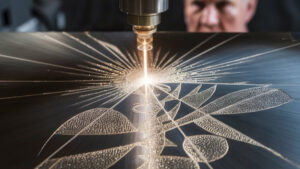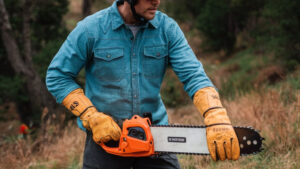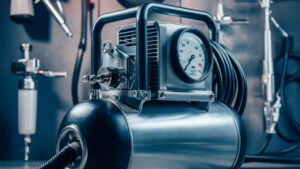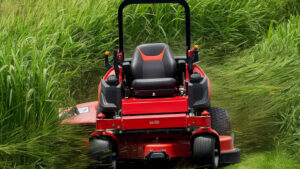Ensuring safety and comfort on a construction site is vital. It protects workers and boosts productivity.
Construction sites are full of hazards. From heavy machinery to high places, risks are everywhere. But safety and comfort can coexist. Simple steps make a big difference. Proper gear, clear signs, and regular breaks help. A safe worker is a happy worker.
And happy workers are productive. Safe sites mean fewer accidents. Comfort means better focus. In the end, everyone benefits. Let’s explore how to make construction sites safer and more comfortable. This guide will show you practical steps. Your workers will thank you. So, let’s get started on making your site the best it can be.
Importance Of Safety And Comfort
The importance of safety and comfort on a construction site cannot be overstated. Workers’ well-being directly affects their productivity and overall site efficiency. Ensuring a safe and comfortable environment helps prevent injuries and boosts morale.
Impact On Productivity
Safety and comfort significantly impact worker productivity. A safe site means fewer accidents, reducing downtime. Comfortable workers can focus better on their tasks. This leads to higher efficiency and better quality work. Proper safety measures also instill confidence in workers. They can work without fear, knowing their well-being is prioritized.
Legal Requirements
Adhering to safety regulations is not just good practice; it is the law. Construction sites must follow safety standards set by authorities. Non-compliance can lead to heavy fines and legal action. These regulations aim to protect workers from harm. They ensure that sites are equipped with necessary safety gear and protocols. Regular safety training is also a legal requirement. It keeps workers informed about potential hazards and safe practices.
Risk Assessment
Risk Assessment is a critical step in ensuring safety and comfort on the construction site. It helps identify potential hazards and evaluate risks to create a safer work environment. Proper risk assessment can prevent accidents and reduce the likelihood of injuries. Let’s delve into the key components of risk assessment.
Identifying Hazards
Identifying hazards involves looking for anything that could cause harm. This could include machinery, tools, or even the work environment itself. Construction sites are full of potential hazards, from falling objects to slips and trips.
Consider using a checklist to ensure you don’t miss any hazards:
- Check for unstable structures.
- Inspect machinery and tools for defects.
- Look for exposed electrical wires.
- Identify areas with poor lighting.
Evaluating Risks
Once hazards are identified, the next step is evaluating risks. This means determining how likely it is that someone could be harmed by each hazard, and how severe the potential harm could be. Use a simple risk matrix to prioritize risks:
| Likelihood | Severity | Risk Level |
|---|---|---|
| Low | Minor | Low |
| High | Major | High |
Address high-risk hazards first. These pose the greatest threat to safety. Implement control measures to reduce or eliminate these risks:
- Provide personal protective equipment (PPE).
- Implement safety protocols.
- Conduct regular safety training.
Evaluating and mitigating risks is an ongoing process. Regularly review and update your risk assessment to ensure ongoing safety on the construction site.
Personal Protective Equipment (ppe)
Personal Protective Equipment (PPE) plays a crucial role in construction safety. It ensures workers are protected from potential hazards. PPE includes items like helmets, gloves, goggles, and more. Each piece of equipment has a specific purpose. Proper use of PPE can prevent injuries and save lives.
Types Of Ppe
There are various types of PPE used on construction sites. Helmets protect the head from falling objects. Safety goggles shield the eyes from dust and debris. Gloves guard hands against cuts and chemicals. Steel-toed boots keep feet safe from heavy items. Earplugs or earmuffs protect hearing in noisy areas. Each type of PPE is essential for different risks.
Proper Usage
Using PPE correctly is vital for it to be effective. Workers must wear helmets that fit well and are in good condition. Goggles should cover the eyes completely and be free of scratches. Gloves must be suitable for the task and fit snugly. Boots should be laced up properly and checked for wear. Ear protection needs to be worn in high-noise zones. Regular training on PPE usage ensures workers understand how to use it properly.
Inspect PPE regularly for damage or wear. Replace any damaged equipment immediately. Proper storage of PPE helps maintain its condition. Clean PPE after use to remove any contaminants. Supervisors should enforce PPE rules on the site. Workers should always report any issues with their PPE.
Safety Training Programs
Ensuring safety and comfort on the construction site is crucial. A well-structured Safety Training Program can prevent accidents and improve worker well-being. Regular training and emergency drills are essential components of this program.
Regular Training
Regular training sessions keep workers updated on safety protocols. These sessions include:
- Hazard identification
- Proper equipment usage
- Personal protective equipment (PPE) guidelines
Short, frequent training sessions are more effective. They help workers remember important information and stay engaged. Using practical demonstrations during training can enhance understanding and retention.
Emergency Drills
Emergency drills prepare workers for unexpected situations. They practice procedures for:
- Fire evacuations
- Medical emergencies
- Natural disasters
Conducting these drills regularly can save lives. Workers should know:
- Evacuation routes
- Assembly points
- Emergency contact numbers
After each drill, review the performance. Discuss what went well and what needs improvement. This feedback loop ensures continuous improvement in safety practices.
Ergonomics On Site
Ensuring safety and comfort on the construction site is crucial. One key aspect is ergonomics. Ergonomics focuses on designing the workplace to fit the worker. By doing so, it helps reduce strain and injuries. This leads to better productivity and overall well-being.
Proper Lifting Techniques
Proper lifting techniques are essential on the construction site. Workers should bend their knees and keep their back straight. This reduces strain on the back. Holding the load close to the body also helps. Avoid twisting while lifting. Instead, turn your whole body.
Use Of Tools And Machinery
Using tools and machinery correctly is vital for ergonomics. Choose tools that fit your hand comfortably. This reduces fatigue and prevents injuries. Ensure tools are well-maintained and sharp. Dull tools require more force, which can lead to strain.
Machinery should also be adjusted to fit the worker. Adjust the seat and controls for comfort. This helps maintain proper posture and reduces strain. Follow the manufacturer’s guidelines for safe use.
Site Organization
Effective site organization is essential for ensuring safety and comfort on a construction site. By organizing the site well, workers can avoid accidents, work efficiently, and feel more comfortable. This section will discuss two key aspects of site organization: clear signage and maintaining cleanliness.
Clear Signage
Clear signage is crucial for guiding workers and visitors. Proper signs direct people to the right places, reducing confusion and accidents. Here are some key points to consider:
- Use large, readable fonts.
- Place signs at eye level for better visibility.
- Ensure signs are weather-resistant.
- Include hazard warnings where necessary.
Effective signage improves communication and safety. It helps prevent injuries and keeps the site running smoothly.
Maintaining Cleanliness
A clean construction site is a safe site. Regular cleaning reduces hazards and creates a more comfortable working environment. Consider the following tips:
- Remove debris and waste daily.
- Keep walkways clear and unobstructed.
- Store materials and tools properly.
- Use trash bins and recycling containers.
Maintaining cleanliness helps prevent accidents. It also boosts worker morale and productivity.
In conclusion, clear signage and cleanliness are vital for a safe and comfortable construction site. Implementing these practices ensures a well-organized site, benefiting everyone involved.
Health And Well-being
Promoting health and well-being on construction sites is crucial. Workers need to feel safe and comfortable to perform their best. This involves not only physical safety but also mental health support. Ensuring access to first aid and mental health resources is essential.
Access To First Aid
Construction sites must have easy access to first aid. Quick response to injuries can prevent complications. First aid kits should be stocked and easily accessible. Workers should know where to find these kits. Regular training on first aid procedures is important.
Here are some items that should be in a first aid kit:
- Bandages
- Antiseptic wipes
- Gauze pads
- Adhesive tape
- Scissors
- Gloves
Every site should have a trained first aid officer. This person can handle minor injuries and guide others in an emergency.
Mental Health Support
Mental health is as important as physical health. Construction work can be stressful. Workers need support to manage this stress. Providing access to mental health resources helps maintain a healthy workforce.
Here are some ways to support mental health on construction sites:
- Offer counseling services
- Provide stress management workshops
- Encourage open communication
- Promote a positive work environment
Managers should be trained to recognize signs of mental stress. They should know how to approach and help workers in need. Regular check-ins can help identify issues early.
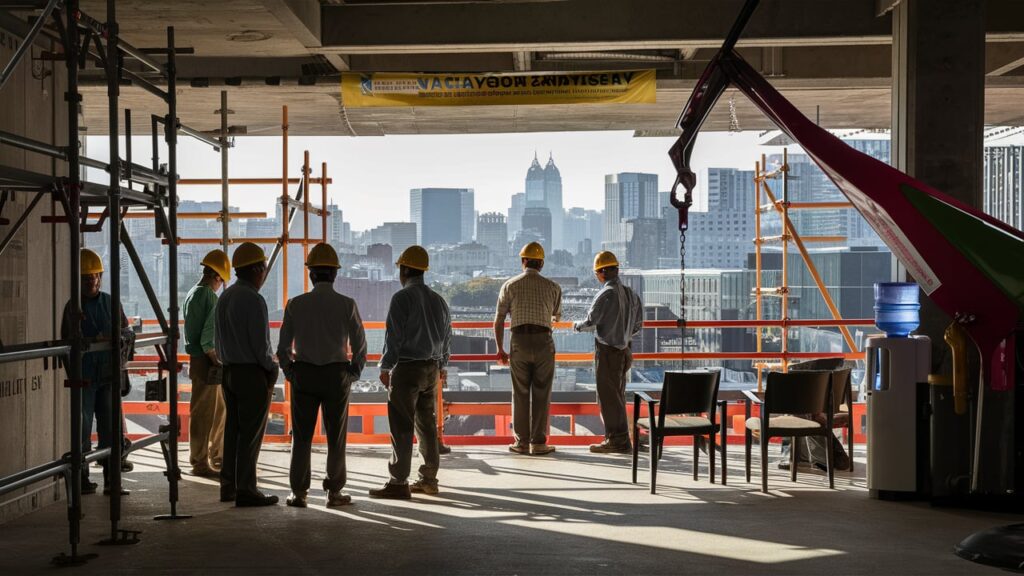
Technology And Safety
Ensuring safety and comfort on construction sites is crucial. Technology plays a key role in this. Modern tools and devices can prevent accidents and improve worker conditions. This blog will explore two significant areas: Wearable Safety Tech and Safety Software Solutions.
Wearable Safety Tech
Wearable technology is transforming construction safety. These devices track health and location data. They provide real-time alerts for potential hazards.
- Smart Helmets: Equipped with sensors, smart helmets detect impact and monitor vital signs. They can alert supervisors if a worker is in distress.
- Wearable Sensors: These can be attached to clothing. They monitor heart rate, body temperature, and fatigue levels.
- GPS Trackers: GPS devices track workers’ locations. This is essential in case of emergencies or evacuations.
These wearables are designed to be comfortable. They do not hinder a worker’s movement. This makes them ideal for the demanding conditions of construction sites.
Safety Software Solutions
Software solutions also play a vital role in construction safety. They help manage and monitor various aspects of site safety.
| Software Type | Benefits |
|---|---|
| Incident Reporting | Enables quick reporting and analysis of accidents. |
| Training Management | Tracks and schedules safety training for workers. |
| Inspection Tools | Helps conduct regular safety checks and audits. |
These software tools ensure that safety protocols are followed. They also provide valuable data for improving site safety.
Technology in construction safety is continually evolving. Embracing these advancements can significantly reduce risks and enhance worker comfort.
Frequently Asked Questions
How Can We Ensure Safety On Construction Sites?
Ensuring safety involves proper training, use of personal protective equipment, and regular site inspections. Implementing safety protocols and emergency procedures is crucial. Always promote a safety-first culture among workers.
What Are The Key Safety Measures For Workers?
Key safety measures include wearing helmets, gloves, and safety boots. Ensure proper scaffolding and fall protection. Conduct regular safety drills and meetings. Provide clear signage and barriers.
Why Is Comfort Important On A Construction Site?
Comfort improves worker productivity and morale. It reduces fatigue and the risk of accidents. Providing rest areas, hydration stations, and ergonomic tools can enhance comfort.
How Do You Maintain Equipment Safety?
Regular maintenance and inspections are essential. Ensure all equipment is up to date with safety standards. Train workers on proper usage and handling.
Conclusion
Creating a safe and comfortable construction site is crucial. It boosts worker morale. It increases productivity. It reduces accidents and injuries. Safety gear and proper training are essential. Regular site inspections help identify potential hazards. Comfortable facilities, like rest areas, improve worker satisfaction.
Safety and comfort go hand in hand. Prioritize them to ensure a successful project. A safe site means happy workers. Happy workers lead to better results. Implement these strategies for a more efficient construction site. Safety and comfort are key.

